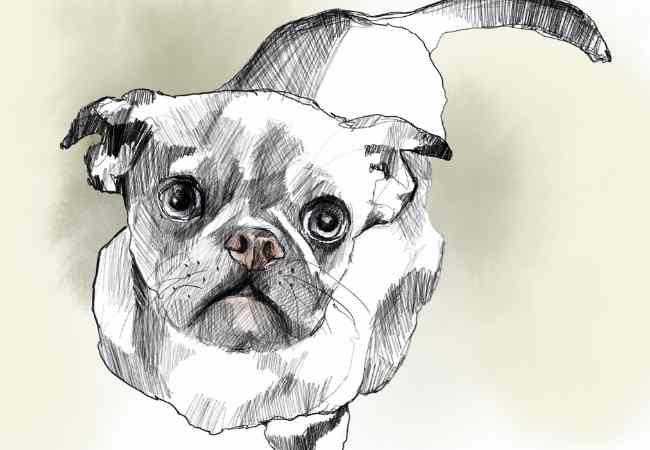To create the depth and contrast in your artwork, also bear in mind that understanding how to use value is very important. Value is the degree of lightness or darkness of hues and is necessary to achieve a credible and captivating work of art. When making any piece of art, be it painting or drawing or others, to master value can greatly improve the overall quality of your work’s appearance. In this guide, we will begin to examine the significance of values being what values they are, the significance of various values in the crafting of art works, and offer useful tips on how to make use of these values in order to enhance your art. It will be seen that, through understanding value, one is able to add depth, dimension, interest and complexity to one’s pieces which makes them more vivid and visually pleasing.
Value of an artwork is relative to the degree of lightness or darkness of colors in the art piece. This is one of the basic principles that help in achieving the composition of parts and creating a level of three-dimensional perspective. For annotation in an art work, researchers highlight the importance of understanding the value, because it determines the design of the colors and tones used and their disposition towards the work.
Value is Essential for Rendering an Image With Depth
Light and shadow are the key elements that help portray depth in two-dimensional art – using value wisely can do the trick. In addition to that, since value refers to the relative degree of light and dark of a given shade of color, changing values can give an artwork the impression of having three-dimensional space, which makes the work look lively. For example, in his painting “Waterloo Bridge”, Claude Monet illustrates how the application of value can be used to increase depth and the ambience in a certain scene. Albrecht Dürer, on the other hand, applied value to woodcuts and engravings in order to show details, space, and even realism. These historical examples show how valuable image manipulation can be in turning a basic picture into a truly captivating three-dimensional image.
Using Value for Contrast and Emphasis While painting and doing art, being able to create a value contrast is Василий Кандинский essential if you want to emphasize certain focal points in the piece. Another great example given above is that if there is a high level of contrast between the light and dark shades, then items within your artwork will definitely pop, therefore giving you a point of focus to work with to create additional visual interest in your piece. For instance, Sargent’s portraits employ high value contrasts in order to bring something plain and transform it into a bold and beautiful dynamic composition. The variety of values Sargent employs enhances the narrative of the painting, allowing viewers to engage with the subject in the manner he intends. With such a strong control over this intervention, you are able to manage the focus of the viewer’s attention towards the most important aspects of your artwork and improve its persuasive capacity.
Techniques for Applying Value to Your Artwork To achieve value in artworks of various styles, it is advisable to learn a number of techniques that can achieve different approaches. These methods enable you to work with light and dark areas with the aim of adding shadow, highlight, and dimensional appeal to the pieces.
Shading Techniques
You need shading techniques in your artwork to give them a range of values. The three main techniques are the following:
- Hatching: This technique is done by making parallel lines and then building up with the value of the lines. The greater the density of the lines and the direction of those lines determines the lightness or darkness that is achieved. This technique is used for texturing by Rembrandt in his etchings as an example.
- Cross-Hatching: In this method, the parallel lines build up the value by getting interlocked. If the lines are overlapped, the resulting area is darker. Cross-hatching is widely used in drawing with a graphite pencil in order to obtain a more broad range of values. Leonardo da Vinci used this technique in his sketches very often to express the form of an object in three dimensions.
- Blending: It is a technique that uses some tool like a finger to smooth out the pencil marks so that there is a transition from light to dark areas in a gradual way. Blending stumps or tortillons can be used to create a smooth gradation. In blending, Michelangelo forwards certain drawings of a figure in a skin with textures looking real and shadows too.
Value Scales and Grayscale Studies: Touching on Some Special Value Applications Ever Considered
To create an artist’s perception of a given theme or image, art grayscales are mostly used. There is also the ease in deriving a tonal scale that is modeled from the various varying tones made in blue, black, red and orange. A Value scale’s vision or outline provided to the artist is usually a pure gradient from black to grey, ensuring a tonally colored selection tool holds true, ensuring smoother transitions.
Value scale creation is a relatively simple task, and feels achievable while doing a simple exercise such as starting off the creation of a fully black box and gaining control over the shading until you get to a white box. Adding additional boxes or bars slowly ensuring the colors transition smoothly will make the overall color and value feel more seamless. The most crucial part of creating the sheer box is remembering to remove the color transition balls as treating them too evenly can mess with the overall value.
- Value : An Obligation For Black and Colour Artworks Value integrated paintings ensure that the natural beauty of the color paintings has not been lost, along with them making the Black color of the painting stand out. Value can be integrated in around 5 to 6 ways, and having a clear understanding of how one shapes the hues can give the color paintings a genuine depth.
- Color Theory and Value: Color theory highlights color’s relation to value. For instance, brighter values of a color can be used in the creation of highlights while darker values can be used for shadows and depth. And by varying these values, the effectiveness of the three dimensional aspect and realism of your color work is enhanced.
- More Illustrations of Adding Value: In the case of Monet’s ‘Waterloo Bridge’, various ranges within the color palette offer varying degrees of atmosphere and depth to the painting. In like manner, in a color painting light values and dark values can be altered to achieve more interesting realism.
Practical Tips for Artists
When it comes to incorporating value into your artwork, here are some practical tips that will help make your work a success:
- Observe and Practice: Make it a point to note value’s application in different pieces of artwork as well as make it a habit of incorporating these in some of your works. Note how John Singer Sargent and others make use of value such as in accentuating something or rendering it deeper.
- Use Value Scales: Value scales and variations can also be used to get the feel of how different values can change a piece of work. Such experiments allow for the appropriate rather than random use of value in your work as you learn how to be more thoughtful about it.
- Study Famous Artworks: Look at how the famous artworks use value. Do value studies one of the artist’s practices so that you learn how to use and implement tonal values in your own artwork.
FAQs
What would be the difference between value and color?
In any piece of artwork, the term value specifies how light or dark a section may appear. This results in different depths within the artwork alongside contrasting shades. Whereas, color includes the hue, saturation, and brightness of the entirety of the piece. Taking into account, the value is a black-and-white gradation, color is a universal term for different tints and levels of intensity. For example, while a red apple can be bright red or dark red, the color itself will still be red.
What changes can be made to incorporate value in my artwork practice?
To incorporate value, one must first learn how to make use of value scales and grayscale studies. Value scales depict the difference between black and white and how many shades of each there are. They also teach how to successfully apply these values to the artwork. Grayscale studies focus on rendering an object in a single tone, in this case grayscale, in order to remove saturation from the image. Soaking in the merits of value in numerous artworks by Caravaggio or Rembrandt can help as these are among the few experts in value manipulation.
Can the value be adjusted after the painting is complete?
In some situations, yes, as mentioned earlier, you can change a value after a painting is complete by means of glazes or by applying another layer. For instance, if you put a thin layer of transparent paint, that can alter the color of the lower layers. But it is advisable that one considers and executes the values on the canvas correctly to avert making considerable changes in the work later on. This method guarantees that value relationships are created at the center enhancing cohesion and realistic touch on the final output.
What are common mistakes to avoid when using value?
Common mistakes to avoid in value usage include: Using too few values: This leads to simple or dull artworks that miss the punch of contrast and dimension. Neglecting the light source: If we do not define the direction of the light, we end up with unrealistic light and shadow placement. Inconsistent values: Values should never be different from the lighting and the form of the image to avoid it looking unrealistic. For example, an artwork with value contradiction can show shadows that are not placed properly or on the correct structure making it look disorganized.
Conclusion
Being able to comprehend the basics of value in your art is very important because it helps to intensify the depth, contrast and the visual aesthetic of the artwork. Value assists in shaping the construct, building texture and ushering the viewers gaze, therefore, it is necessary in creating life like and captivating art. Being able to experiment with a variety of value techniques like shading, value scales, g values and grayscale studies will help in better understanding and integrating value. Looking at Histronical examples as well as noticing how artists like Claude Monet and John Singer Sargent employed value would certainly be inspirational and informative. If value is well applied, it would definitely raise the standard and impact of any artwork, making it more stunning and fascinating.
More Post
- Understanding Complementary Colors for Beginners
- Diamond Painting for Beginners: A Comprehensive Guide to Getting Started
- How to Draw a Dog: An Easy Step-by-Step Video Tutorial
- Discover How To Draw A Rose – Step By Step Easy Drawing Tutorial
- How to Draw an Eye: An Easy Step-by-Step Drawing Tutorial for Beginners





